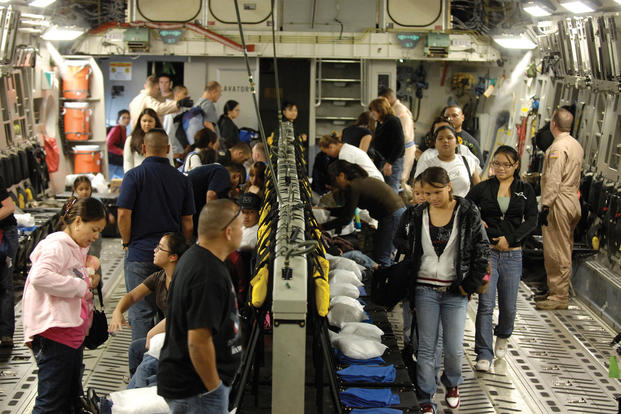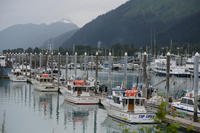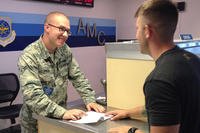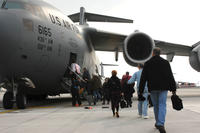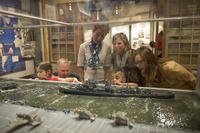- Look for super-saver fares to the destination of your choice. You may find that a bargain flight is a better way to go than taking the scheduling risks associated with flying Space A. While Space A flights can save you money, a ticket in hand does provide a peace of mind. Click here to get tips on ways to fly on a budget.
- When you are considering flying Space A, ask around your command, and try to get information from others who have used the service to find out which flights typically have availability to and from your target destination.
- The quickest path may not be a straight line. Not all military terminals handle the same volume of traffic. Such bases as McChord, Travis, Dover, Ramstein, are major gateways and handle a lot of traffic. Going from major terminal to major terminal may get you to your destination faster than if you had flown directly out of a smaller terminal.
- Before 9/11 it was common to get Space A information over the phone or on the Web. Now such information is rare, and don't be surprised if you are required to sign-up in person.
- Space A flights do not always keep to schedule, particularly OUTCONUS. This has been especially true since 9/11. Missing a Space A flight is never a valid excuse for reporting back late from leave, so plan extra travel time when going Space A. It is recommended to add at least 2 days to your plans for any contingencies - you may need to delay your departure and/or return.
- While terminal personnel are generally very courteous and professional, they are often short on details. Don't get frustrated. Keep in mind that force protection has become a critical concern and it often governs what information is made available. Remember, the mission of any flight takes a higher priority that accommodating Space A.
- As a servicemember, you are likely aware of the austere condition on most military flights. If you are traveling with your family, make sure they know what to expect. Sometimes the seating can best be described as "unique." Be prepared for the flight to be extra hot or cold, sometimes both. Always bring a jacket no matter what the current weather. The flights are usually cold due the altitude, and you may be diverted to a place much colder than your original destination.
- Bring snacks, plenty of reading material, a game boy, walkman, laptop, etc. for the flight and the waiting period in the terminal. And don't forget your earplugs. Earplugs will most likely be provided, but it is always good to have your own.
- Don't dwell on it, but give some thought on a back-up plan if the flight ends up going somewhere you hadn't planned, or doesn't end up going to your target destination. Remember most military flights make several stops to and from the final destination, and conditions may warrant an unscheduled change.
- Space A should not be your first choice if you absolutely, positively have to be somewhere on time. The primary purpose of military aircrafts is to perform military missions, not chauffeur you around. Space A is a great way to see the world, but think of it as the proverbial "slow boat to China" rather than the Concorde.
- To be a successful Space A traveler, you have to relax and be patient. If you are unable to do that, you should reconsider your decision to try Space A travel.
- Think of traveling Space A as an adventure, and be open to changes in you itinerary. Your attitude will make the difference!
For further information visit the Air Mobility Command Space A Website.
